WWII 1944 CONFIDENTIAL Major John Murphy 365th Fighter Group KIA FW-190 Combat Report



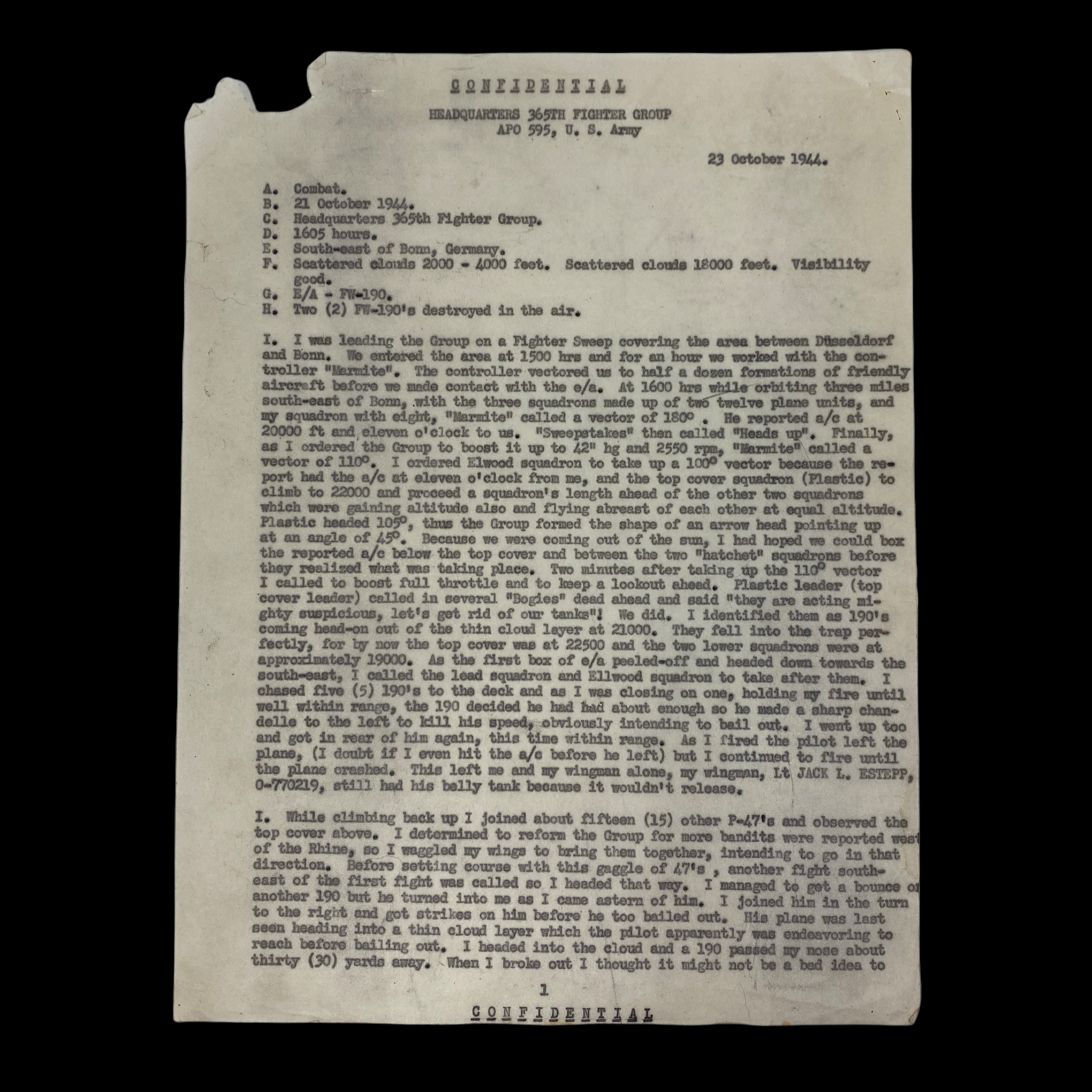
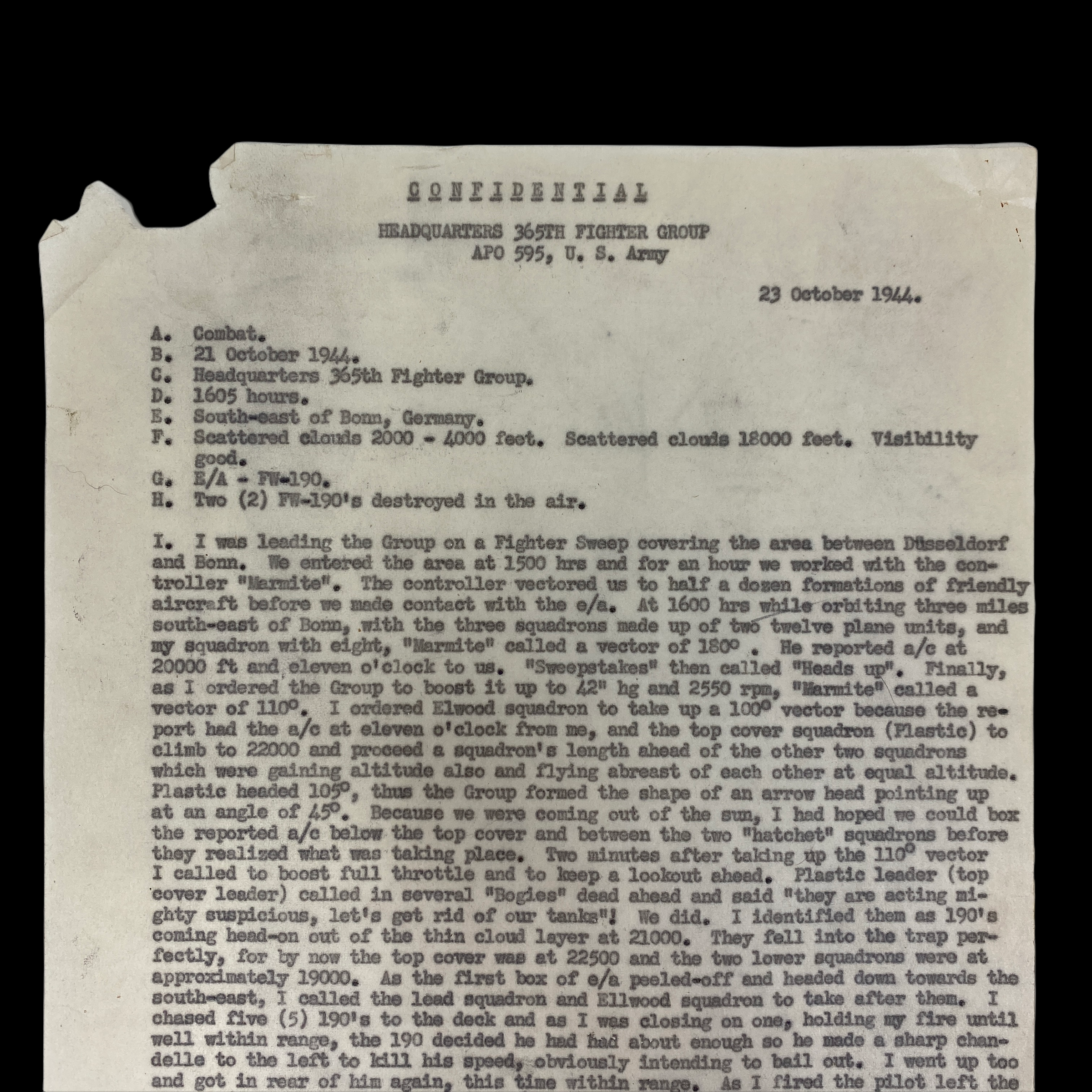
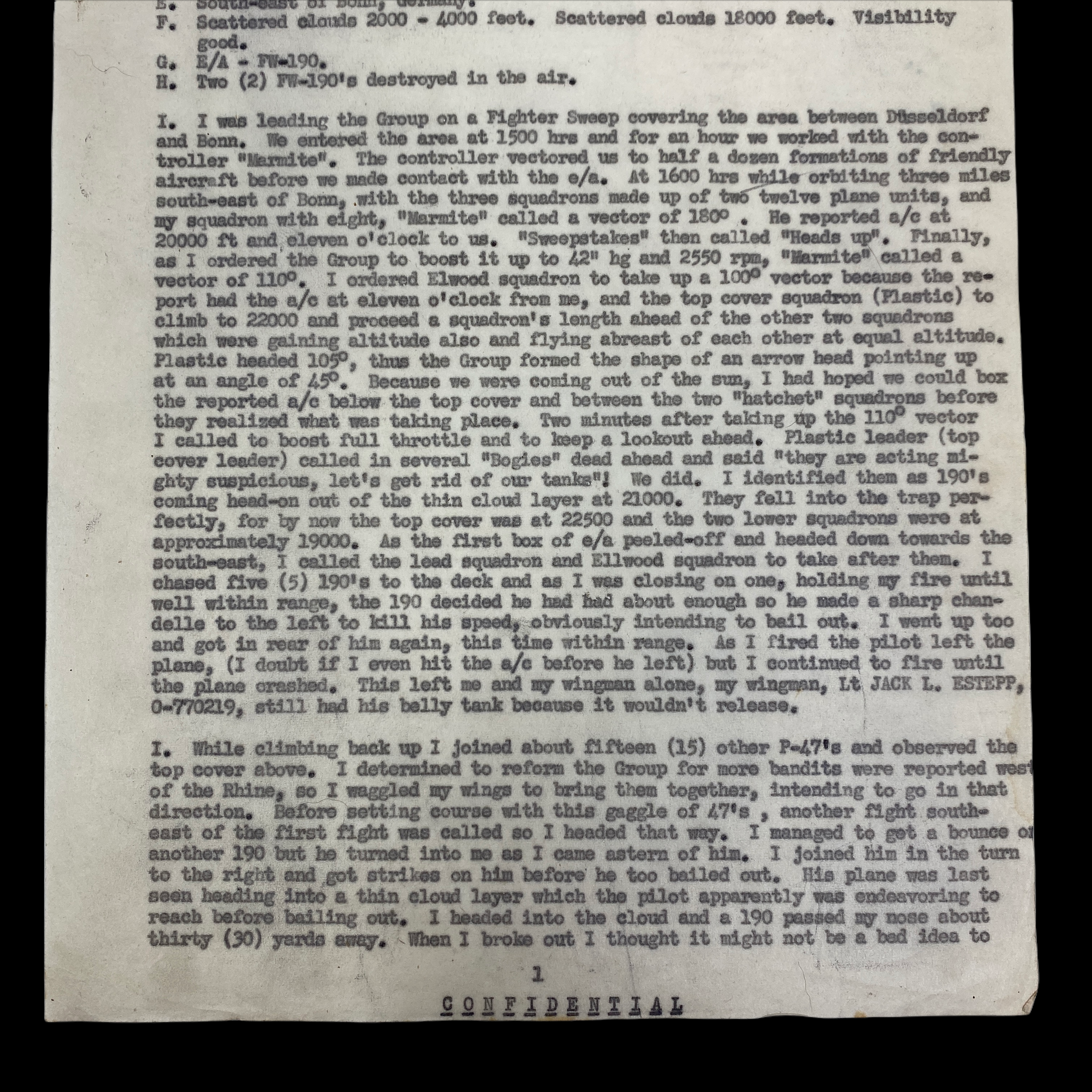
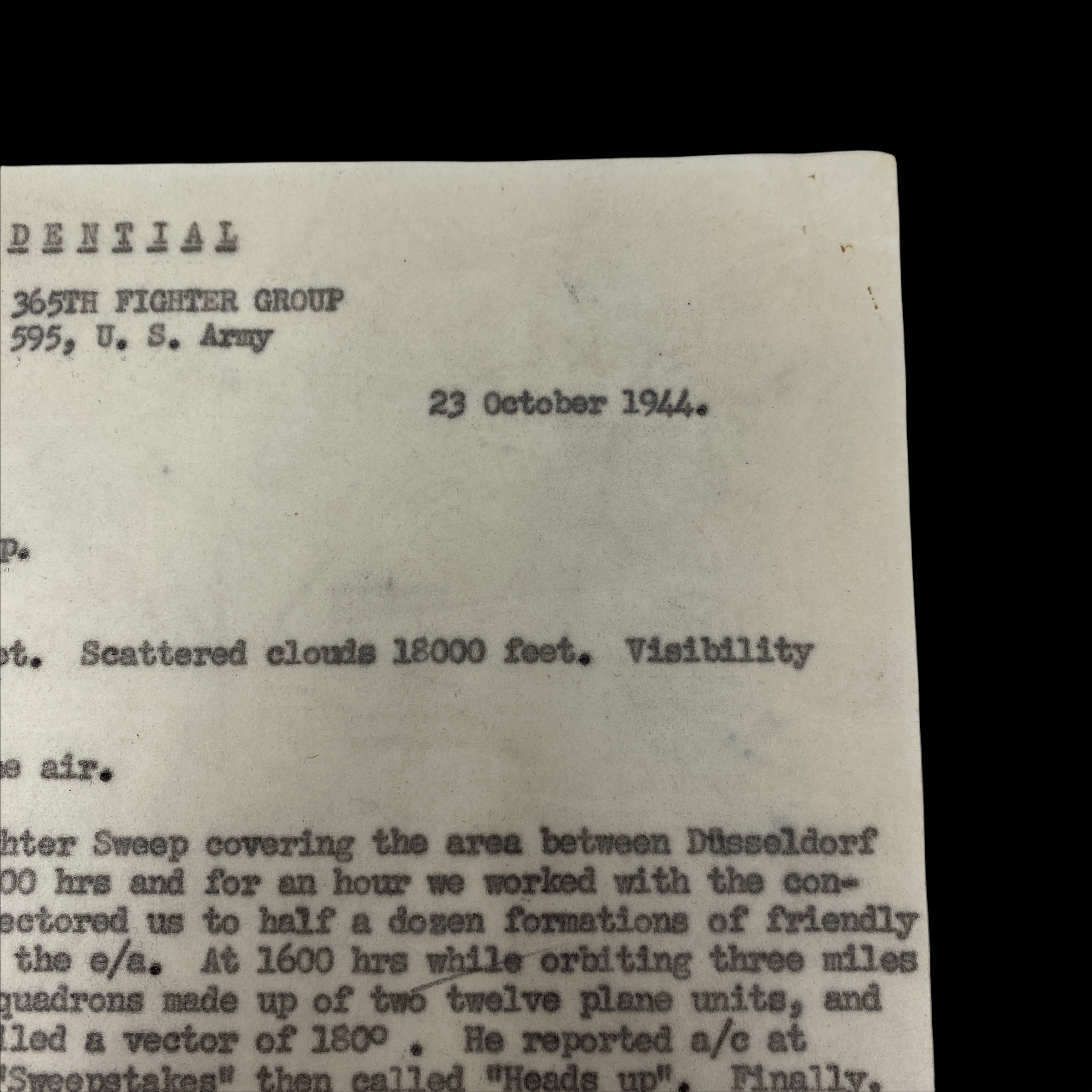
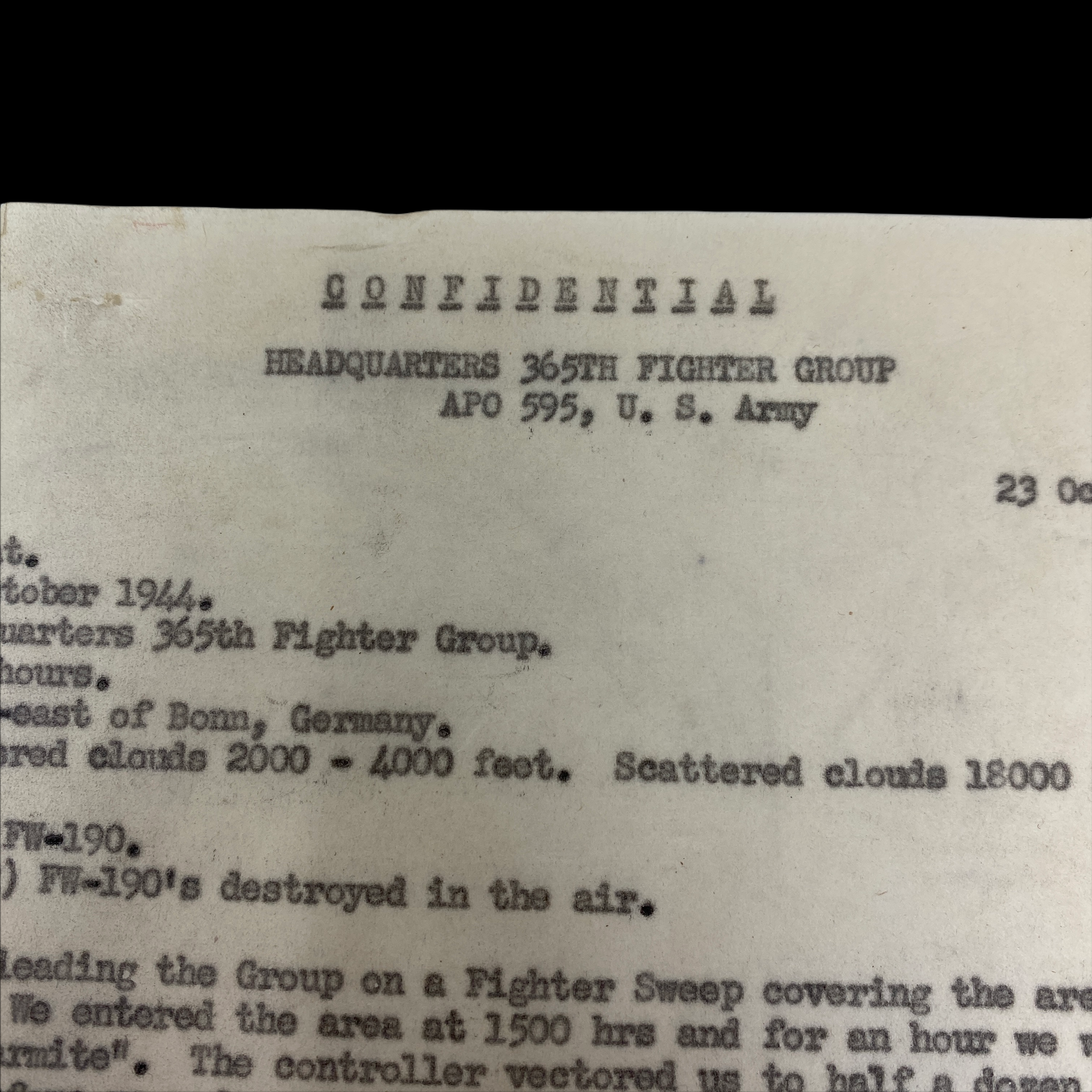
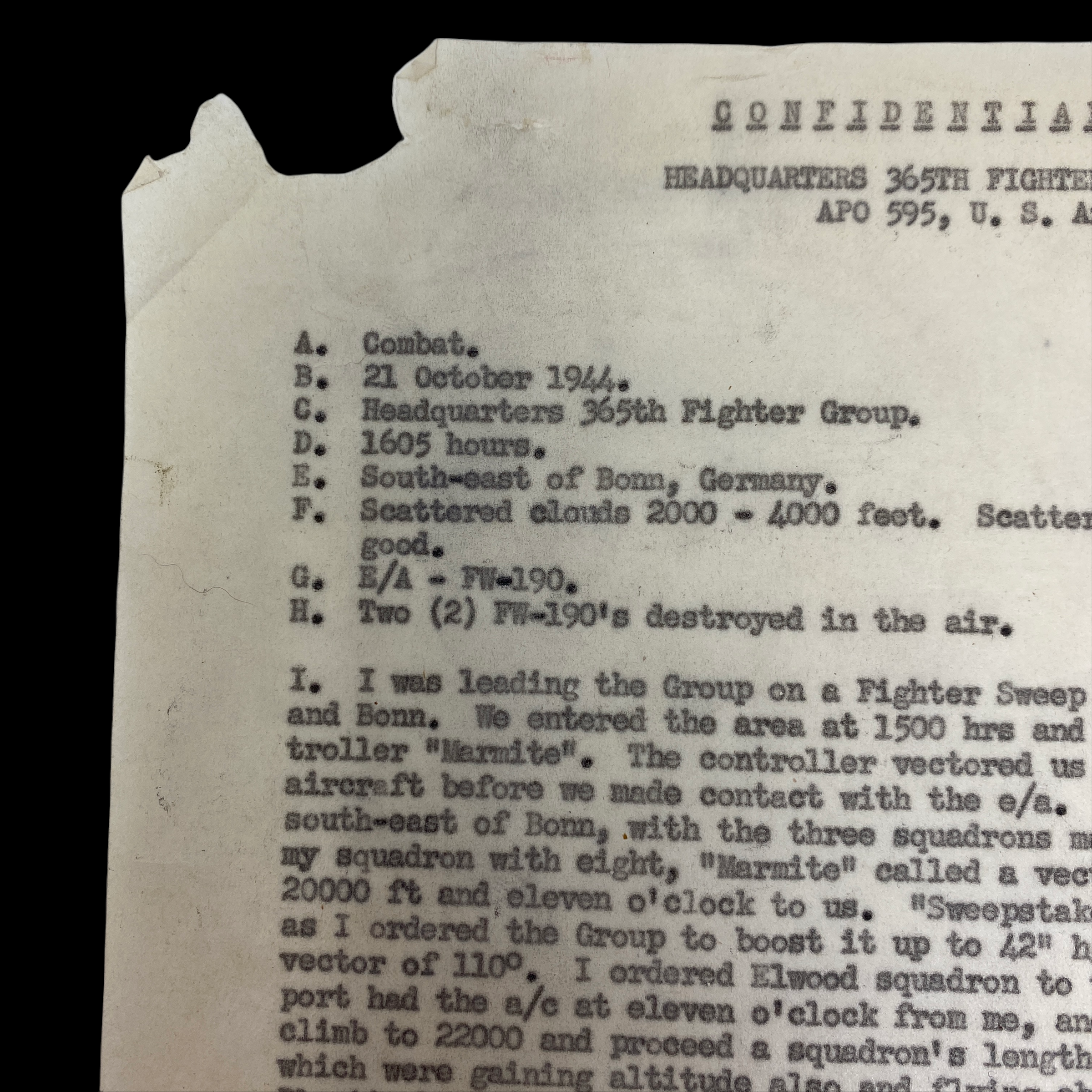

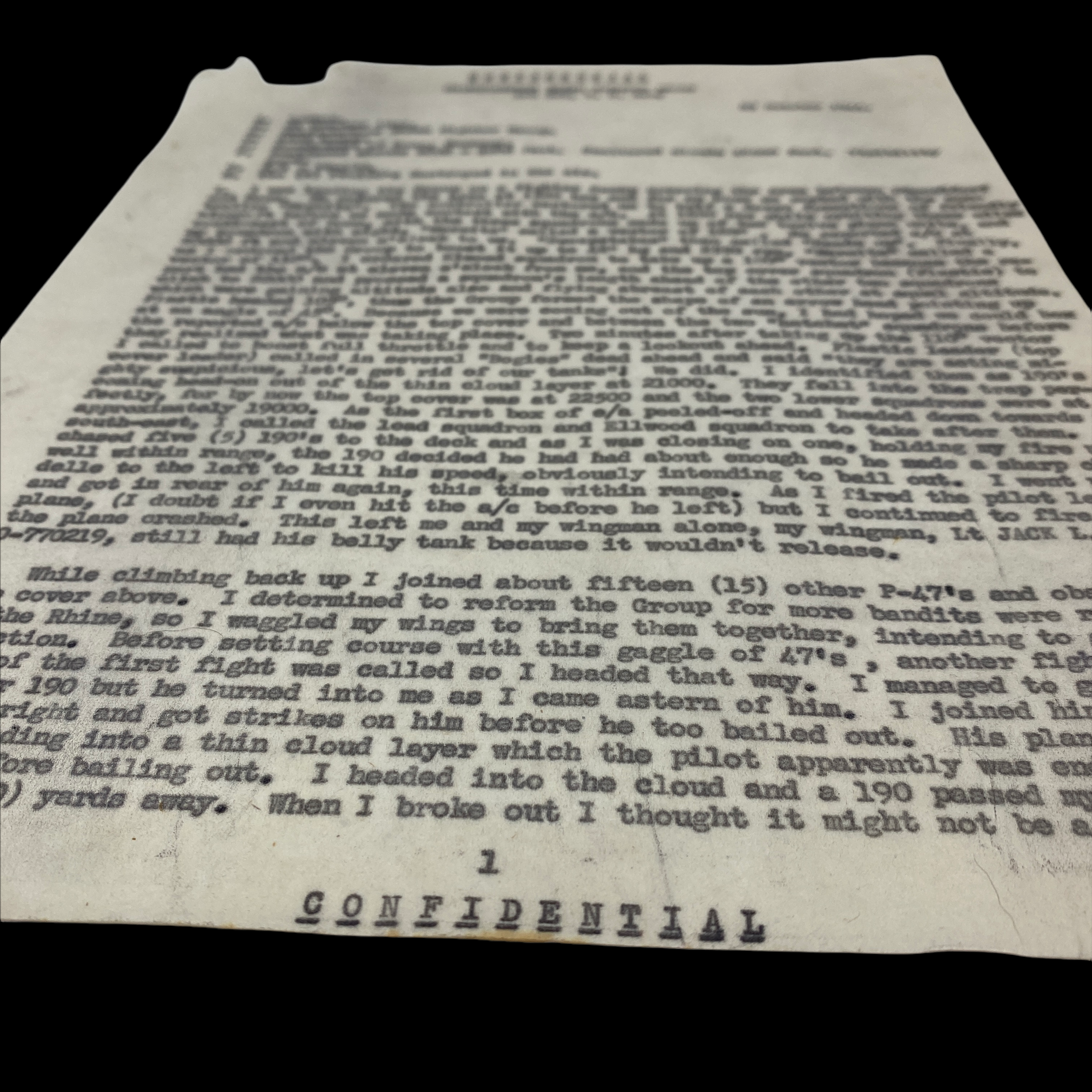
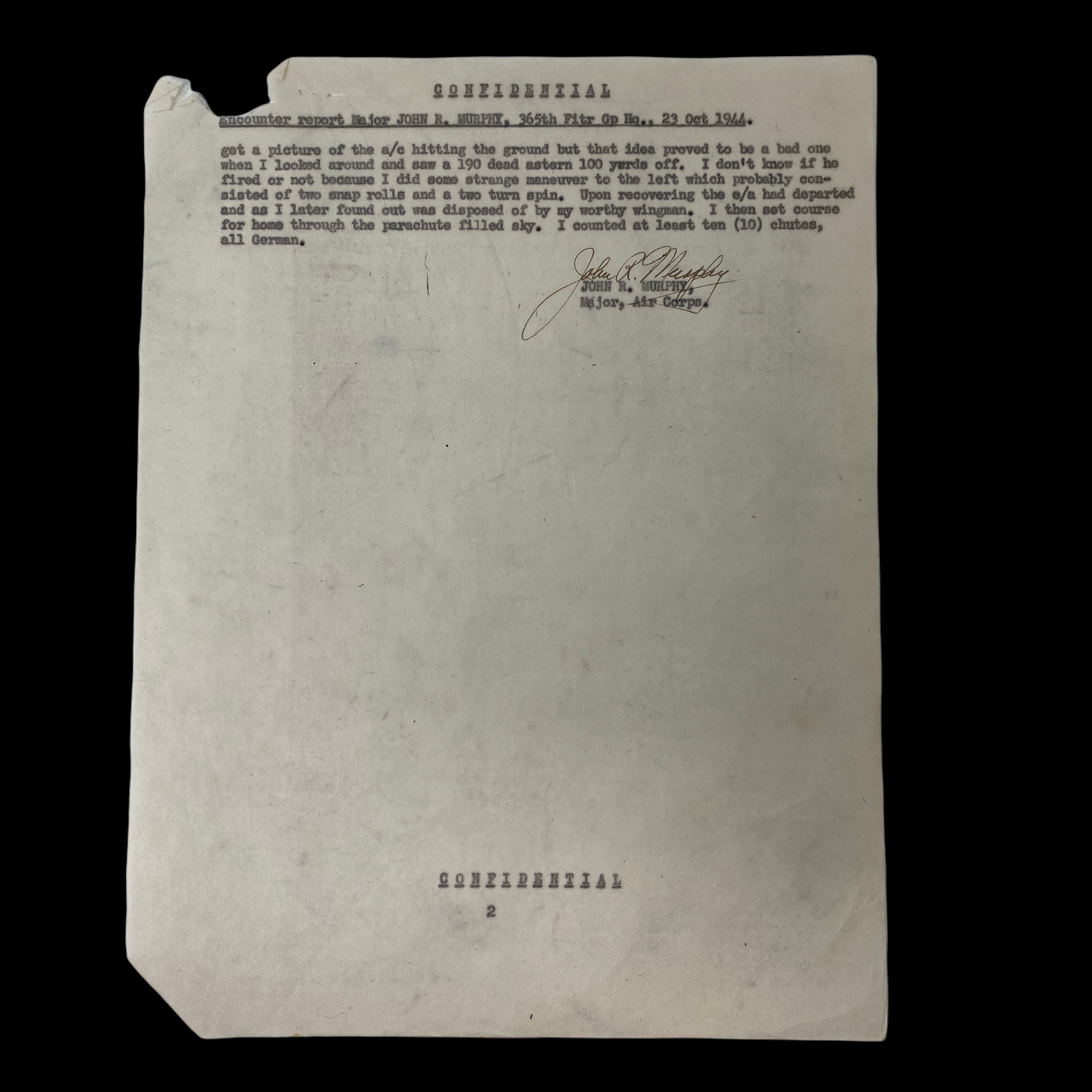

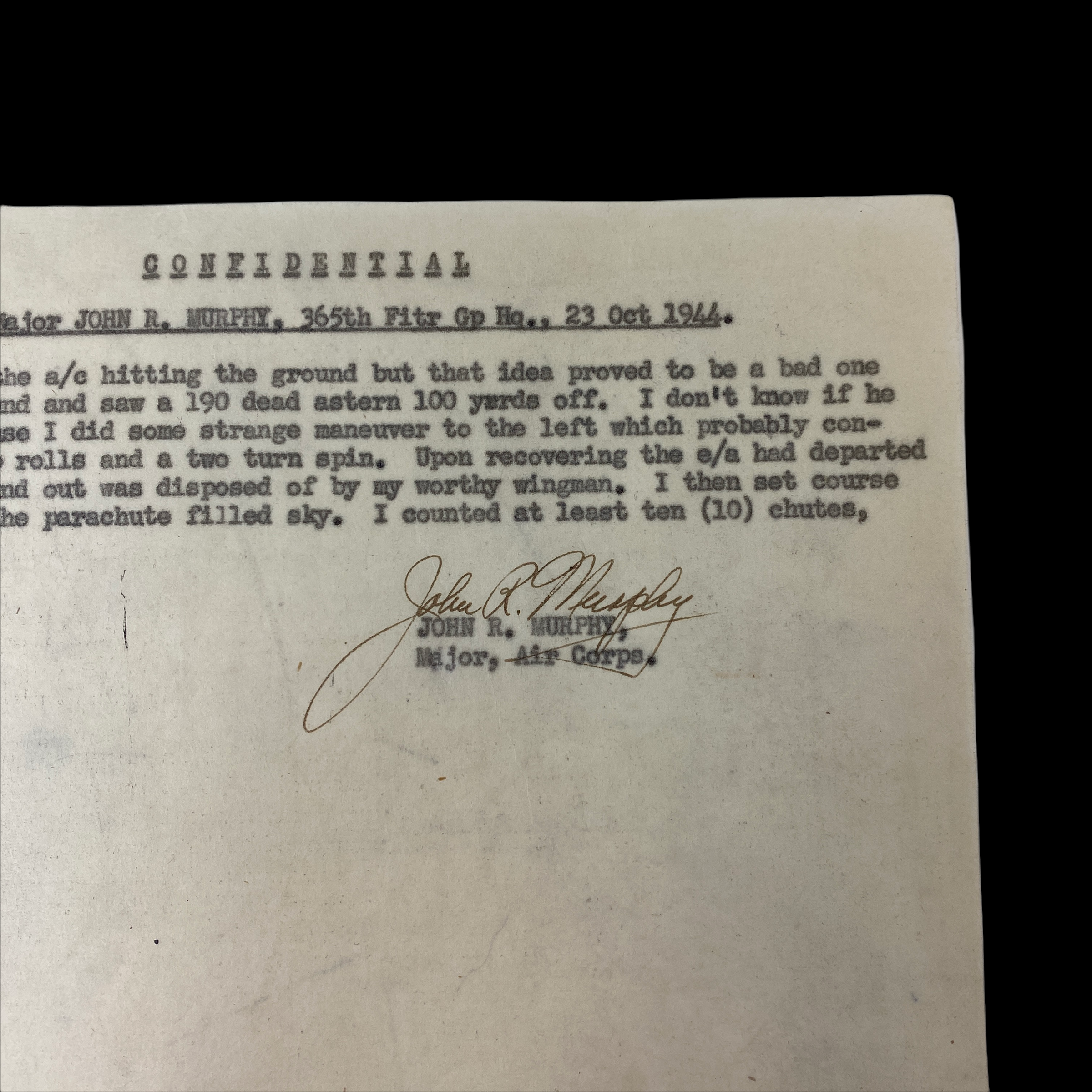
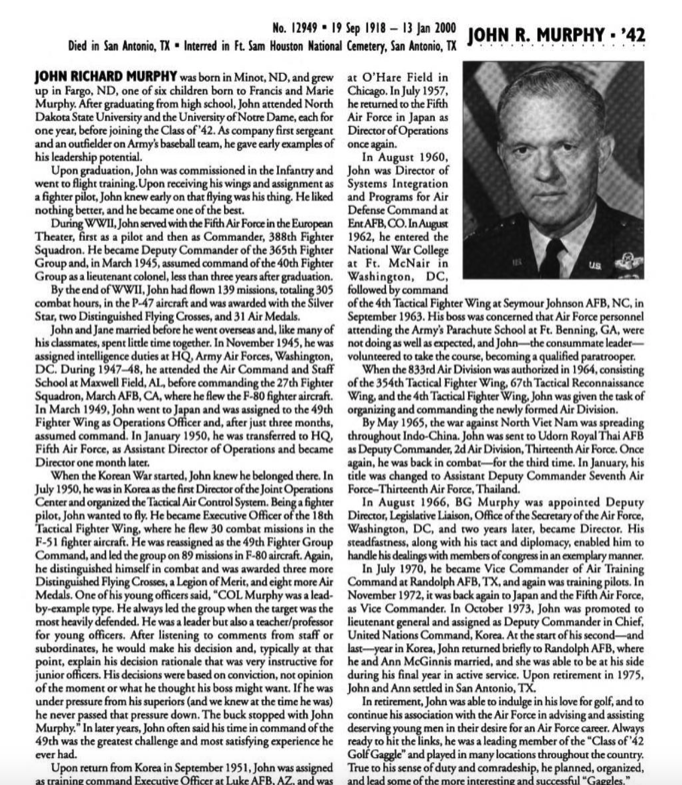
WWII 1944 CONFIDENTIAL Major John Murphy 365th Fighter Group KIA FW-190 Combat Report
This incredibly rare 1944 WWII ‘CONFIDENTIAL’ typed and signed combat report accredits Major John R. Murphy of the 365th Fighter Group with two confirmed German FW-190 victories. Written on October 23rd, 1944 these two original pages very accurately account the combat mission on October 21st, 1944 as 1605 hours over South-east of Bonn, Germany. The end of the encounter report is hand signed by John R. Murphy (Major, Air Corps.).
During World War II, John R. Murphy served with a 5th Air Force in the European theater, first as a pilot and then as a commander, 388th Fighter Squadron. He became Deputy Commander of the 365th Fighter Group and in March 1945 assumed command of the 40th Fighter Group as a Lieut. Col., less than three years after graduation. By the end of World War II, John R. Murphy had flown 139 missions, totaling 305 and five combat hours in the P-47 Aircraft and was awarded with 1 Silver Star, 2 Distinguished Flying Cross's, and 31 Air Medals.
Caption from the photograph of John R. Murphy looking at his aircraft:
“Colonel John R Murphy of the 365th Fighter Group, examines a whistle he made and attached to his P-47 Thunderbolt. Image stamped on reverse: 'Passed for publication 22 Nov 1944.' [stamp] and 'Sacred.' [stamp]. Printed caption on reverse: 'Ger. Incend Shell on P...47. Nov 22. NINTH AIR FORCE HEADQUARTERS SOMEWHERE IN FRANCE. Lieutenant Colonel John R Murphy, Minot N,D, a Ninth Air Force P-47 Thunderbolt fighter-bomber, examines the "screamer" whistle he devised from a German incendiary shell. When his unit moved onto a former Luftwaffe field, the colonel found a cluster of the shells and attacked one to the bomb shackle of his plane.”
365th Fighter Group:
The Group moved to England in December 1943 as part of the Ninth Air Force. Flying P-47s, the Group took part in missions over northern France designed to weaken Germany's ability to repulse the planned Allied invasion of summer 1944. After the successful beach landings, the Group supported the Allies as they fought to break out at St. Lo and push further westwards. They supported the airborne assault into Holland and during the autumn of 1944, flew to aid the seizure of Aachen. The Group received a DUC for taking out a large number of enemy aircraft over the Bonn-Dusseldorf area in Germany on 21 Oct 1944. The 365th was one of the Ninth Air Force fighter groups to win a DUC for action in southern Germany, knocking out airfields and aircraft to help speed the American advance.
Deployed to England aboard the RMS Queen Elizabeth and served in combat as part of VIII Fighter Command from October 1943 to May 1945, participating in operations that prepared for the invasion of the Continent, and supporting the landings in Normandy and the subsequent Allied drive across France and Germany. The group flew P-47 Thunderbolts until they were replaced by P-51 Mustangs in November 1944. Aircraft of the 356th were identified by a magenta/blue diamond pattern around their cowling.